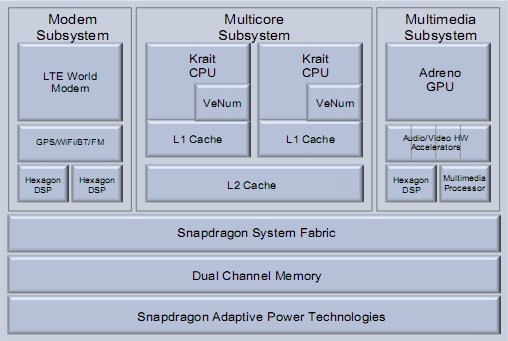Install the app
How to install the app on iOS
Follow along with the video below to see how to install our site as a web app on your home screen.
Note: This feature may not be available in some browsers.
-
After 15+ years, we've made a big change: Android Forums is now Early Bird Club. Learn more here.
You are using an out of date browser. It may not display this or other websites correctly.
You should upgrade or use an alternative browser.
You should upgrade or use an alternative browser.
28nm....????
- Thread starter chris4x4
- Start date
The numbers refer to the manufacturing process geometry.
For you, a smaller number means higher power efficiency for the same clock speed than a chip made with a larger process.
There is no con to the consumer.
I believe that you'll find that the Maxx SoC is built using a 28 nm process as well.
For you, a smaller number means higher power efficiency for the same clock speed than a chip made with a larger process.
There is no con to the consumer.
I believe that you'll find that the Maxx SoC is built using a 28 nm process as well.
chris4x4
Android Enthusiast
Ok. So the M isnt any more battery efficient than the MAXX?The numbers refer to the manufacturing process geometry.
For you, a smaller number means higher power efficiency for the same clock speed than a chip made with a larger process.
There is no con to the consumer.
I believe that you'll find that the Maxx SoC is built using a 28 nm process as well.
Ok. So the M isnt any more battery efficient than the MAXX?
That metric refers to one chip of many, the main processor.
No way to know without testing the whole device.
Ok. So the M isnt any more battery efficient than the MAXX?
I know the M has the newest s4 soc. I don't think the Maxx does. Check out a review of the Maxx and it should tell you which soc it has.
I know the M has the newest s4 soc. I don't think the Maxx does. Check out a review of the Maxx and it should tell you which soc it has.
You're absolutely right, I was wrong on that.
I saw a review that said S4 for it and shrugged it off.
Both the RAZR and MAXX use the TI OMAP 4 series.
chris4x4
Android Enthusiast
Are they 28nm chips?You're absolutely right, I was wrong on that.
I saw a review that said S4 for it and shrugged it off.
Both the RAZR and MAXX use the TI OMAP 4 series.
Are they 28nm chips?
45 nm
http://www.ti.com/general/docs/wtbu...ateId=6123&navigationId=12843&contentId=53243
To date the S4 is the only popular SoC using a 28 nm process.
chris4x4
Android Enthusiast
Alright. Please forgive me, as Im trying to wrap my head around these things. So.....the 45nm chip is larger, and uses more power than the 28nm chip? As for performance, as they similar? Do they perform the same dutys?
Yes, they are both top performers. Both the OMAP and the S4 have excellent media processing features, something that doesn't really get exposed in those benchmark tests you may have read about. The S4 has faster cpus and will draw less power in some regards.
Alright. Please forgive me, as Im trying to wrap my head around these things. So.....the 45nm chip is larger, and uses more power than the 28nm chip? As for performance, as they similar? Do theti perform the same dutys?
The s4 28nm chip is both more efficient and more powerful than the older chips. Just check out some reviews. They almost universally show that the s4 gets higher benchmarks and has better battery life than the older s3 and ti omap chips.
chris4x4
Android Enthusiast
Yes, they are both top performers. Both the OMAP and the S4 have excellent media processing features, something that doesn't really get exposed in those benchmark tests you may have read about. The S4 has faster cpus and will draw less power in some regards.
Thanks you guys! Im gonna dive deeper into this, and see if I ca nfind some comparoThe s4 28nm chip is both more efficient and more powerful than the older chips. Just check out some reviews. They almost universally show that the s4 gets higher benchmarks and has better battery life than the older s3 and ti omap chips.

If you're really interested in the S4 and other Qualcomm processor details, then you want these Qualcomm documents -
View attachment 39862
View attachment 39863
View attachment 39864

Note that a programmable world modem is built-in, other phones need a separate chip for that, so that's another power-saving feature here.
Next, take a gander at the block below the GPU - audio and video acceleration, and a multimedia processor below that.
Translation - for media, the GPU isn't involved like on earlier technologies, there's a dedicated core for that.
That is exactly the approach used in the TI OMAP processor that makes the Galaxy Nexus media performance so popular (the Nexus uses the 4460, the other Razrs use the 4430, very similar).
So when it comes to discussing hw graphics acceleration, there's far more to the story and the glory than the GPU.
Overall, which is better, the S4 or the OMAP 4430? The S4, I agree.
Is the difference something that you will notice? Mileage varies for every user on the top-end phones.
I've been using an S4 since the beginning of June in my Evo LTE (HTC One X). I'm absolutely happy with it, zero complaints. (I've used the Qualcomm S1, S2 and S3 processors in phones to the tune of more than a year for each one, so I'm known as a Qualcomm supporter around here. In the interest of fairness, I didn't want to push the S4 too hard. Personally, I like the other RAZRs for their performance, especially the Maxx of course.)
I have zero clue that this will possibly relate to the RAZR M whatsoever, but I'll just toss it out there - I typically draw about 10% power on my phone per hour of on-screen use over wifi, and I use my phone over 7 hours/day of screen on time with a 2000 mAh battery, 4.7" LCD screen and CDMA (like Verizon). And I'll get more than 12 hours out of charge with that sort of abuse, and can easily go into a few days on just light use.
I think I'm saying that I would be surprised if power efficiency were an issue with any RAZR and the M isn't a cheat at all using the S4 (quite the opposite).
Hope that helps.
PS - I think I have something on the order of hundreds of pages of publicly-available TI OMAP 4 documents, I work in semiconductor r&d, so I'll stand by my claim that the OMAP 4 is no slouch at all. But yeah, the S4 is better in many regards.
The real proof will come in the final product and how you use it.
View attachment 39862
View attachment 39863
View attachment 39864

Note that a programmable world modem is built-in, other phones need a separate chip for that, so that's another power-saving feature here.
Next, take a gander at the block below the GPU - audio and video acceleration, and a multimedia processor below that.
Translation - for media, the GPU isn't involved like on earlier technologies, there's a dedicated core for that.
That is exactly the approach used in the TI OMAP processor that makes the Galaxy Nexus media performance so popular (the Nexus uses the 4460, the other Razrs use the 4430, very similar).
So when it comes to discussing hw graphics acceleration, there's far more to the story and the glory than the GPU.
Overall, which is better, the S4 or the OMAP 4430? The S4, I agree.
Is the difference something that you will notice? Mileage varies for every user on the top-end phones.
I've been using an S4 since the beginning of June in my Evo LTE (HTC One X). I'm absolutely happy with it, zero complaints. (I've used the Qualcomm S1, S2 and S3 processors in phones to the tune of more than a year for each one, so I'm known as a Qualcomm supporter around here. In the interest of fairness, I didn't want to push the S4 too hard. Personally, I like the other RAZRs for their performance, especially the Maxx of course.)
I have zero clue that this will possibly relate to the RAZR M whatsoever, but I'll just toss it out there - I typically draw about 10% power on my phone per hour of on-screen use over wifi, and I use my phone over 7 hours/day of screen on time with a 2000 mAh battery, 4.7" LCD screen and CDMA (like Verizon). And I'll get more than 12 hours out of charge with that sort of abuse, and can easily go into a few days on just light use.
I think I'm saying that I would be surprised if power efficiency were an issue with any RAZR and the M isn't a cheat at all using the S4 (quite the opposite).
Hope that helps.
PS - I think I have something on the order of hundreds of pages of publicly-available TI OMAP 4 documents, I work in semiconductor r&d, so I'll stand by my claim that the OMAP 4 is no slouch at all. But yeah, the S4 is better in many regards.
The real proof will come in the final product and how you use it.
